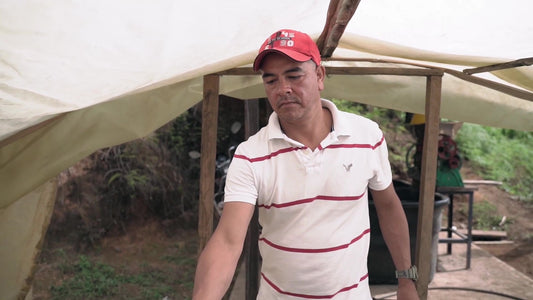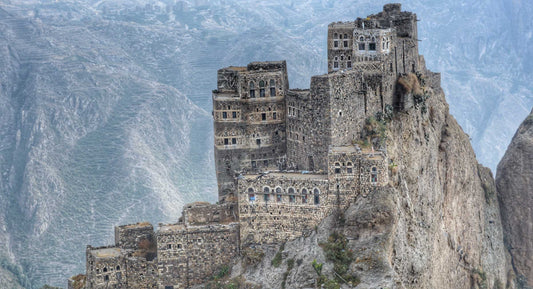Colombian coffee is celebrated globally for its exceptional quality and unique flavour profile. Yet, there are numerous intriguing aspects about Colombian coffee that are lesser known. From its distinct growing conditions to its impact on local communities, this beloved beverage has a rich and complex story. Let’s delve into ten fascinating aspects that contribute to the fame and allure of Colombian coffee.
What Makes Colombian Coffee Unique Compared to Other Coffee Origins?
Colombian Coffee Flavour Profile
Colombian coffee is renowned for its balanced flavour, which is often described as having a perfect blend of sweetness, acidity, and body. Unlike coffees that emphasize more bitter or overly fruity notes, Colombian coffee tends to offer a harmonious mix of flavours. Common tasting notes include caramel, nuts, and chocolate, accompanied by a bright, refreshing acidity. This distinct profile sets Colombian coffee apart from other coffee origins, making it a favourite among coffee enthusiasts worldwide. The balance and versatility of Colombian coffee mean it can be enjoyed black or with milk, hot or iced, and still retain its signature taste.
Colombian Coffee Growing Practices
The traditional farming methods in Colombia involve meticulous care at every stage of the coffee production process. From hand-picking ripe coffee cherries to ensuring proper fermentation, Colombian farmers prioritize quality over quantity. This commitment to excellence helps maintain the consistency and superior quality of Colombian coffee. Farmers often use organic methods and avoid chemical fertilizers and pesticides, further enhancing the natural flavours of the coffee beans. The emphasis on traditional and sustainable practices ensures that every cup of Colombian coffee is a true representation of its origin.
Variety of Coffee Beans
Colombian coffee primarily consists of Arabica beans, known for their superior quality and delicate flavour compared to the more robust but harsher-tasting Robusta beans. Arabica beans grown in Colombia are classified into various types, each offering unique flavours and characteristics. Varieties such as Typica, Bourbon, and Caturra are common in Colombia. These beans are prized for their aromatic qualities and complex flavour profiles, contributing to the overall reputation of Colombian coffee as one of the best in the world.

How Does the Climate and Geography of Colombia Influence Its Coffee Production?
Altitude and Temperature
Colombia's diverse geography plays a significant role in coffee production. Coffee thrives at high altitudes between 1,200 and 1,800 meters, where cooler temperatures slow the maturation of coffee cherries, allowing for more complex flavours to develop. This altitude range ensures that the coffee beans have the perfect balance of acidity and sweetness. The Andean mountains provide the ideal environment for these high-altitude coffee farms. The temperature variations between day and night create conditions that enhance the beans' flavour complexity, contributing to the unique taste of Colombian coffee.
Rainfall and Soil
The country’s climate, characterized by ample rainfall and rich volcanic soil, provides optimal growing conditions for coffee. The well-distributed rainfall ensures that coffee plants receive consistent water, crucial for the growth and development of high-quality beans. Volcanic soil is rich in minerals, which contributes to the unique flavour profiles of Colombian coffee. The soil's excellent drainage properties also prevent waterlogging, protecting the delicate roots of coffee plants. The combination of these natural factors creates an environment where coffee can flourish and develop its distinctive taste.
Microclimates
Colombia’s diverse topography results in a range of microclimates, each imparting unique characteristics to the coffee grown there. Microclimates are small, specific climate zones within a larger area, influenced by factors like altitude, wind patterns, and proximity to bodies of water. These microclimates allow for the cultivation of coffee with a variety of flavour profiles within a single country. For example, coffee grown in the northern regions of Colombia may have different characteristics than coffee grown in the southern regions due to these microclimatic differences. This diversity contributes to the rich tapestry of flavours that Colombian coffee is known for.
What Are the Main Coffee-Growing Regions in Colombia and Their Unique Characteristics?
Huila
Huila is one of Colombia’s most important coffee-growing regions, known for producing coffee with a distinctive flavour profile featuring bright acidity and a fruity, floral aroma. The region's volcanic soil and favourable microclimate make it ideal for cultivating high-quality coffee beans. Huila's coffee is often described as having a sweet, wine-like flavour with notes of red fruits. This region consistently produces award-winning coffees and is a favourite among specialty coffee roasters worldwide.
Antioquia
Antioquia holds historical significance in Colombia's coffee industry. It was one of the first regions to start large-scale coffee cultivation in the 19th century. Coffee from Antioquia typically has a medium body with notes of chocolate and nuts, making it a favourite among coffee lovers who prefer a well-rounded, classic flavour. The region's diverse climate zones also allow for a variety of coffee profiles. Antioquia's rich history and tradition in coffee farming contribute to its reputation as a cornerstone of Colombian coffee culture.
Nariño
Situated in the high peaks of the Andes, Nariño produces coffee at some of the highest altitudes in Colombia, often above 2,000 meters. This high altitude contributes to a unique flavour profile marked by high acidity and a sweet, complex taste. The coffee from Nariño is known for its floral and citrus notes, making it highly sought after by specialty coffee buyers. The challenging terrain and remote location of Nariño mean that coffee production here is often more labour-intensive, but the resulting beans are considered some of the finest in Colombia.
Tolima
Tolima is another prominent coffee-growing region, known for its rich and full-bodied coffees with notes of caramel and red fruits. The region's diverse landscapes, ranging from high mountains to lush valleys, provide ideal conditions for coffee cultivation. Tolima's coffee is often praised for its balanced flavour and smooth finish. The region has been gaining recognition in recent years for its high-quality coffee and sustainable farming practices.
Sierra Nevada de Santa Marta
The Sierra Nevada de Santa Marta region, located along the Caribbean coast, produces coffee with a lower acidity and a fuller body compared to other regions. The unique climate of this region, influenced by its proximity to the sea and high elevation, creates ideal conditions for coffee cultivation. Coffee from this region is often described as having a chocolatey flavour with hints of tropical fruits. The indigenous communities in the Sierra Nevada de Santa Marta have a long history of coffee cultivation, and their traditional farming methods contribute to the unique qualities of the coffee.
Cauca
Cauca is renowned for producing coffee with a bright acidity, medium body, and complex flavours that include notes of citrus and tropical fruits. The region's high altitudes and rich volcanic soil create optimal growing conditions for high-quality coffee beans. Cauca has a diverse range of microclimates that contribute to the complexity of its coffee. The region is also known for its strong community of smallholder farmers who are committed to sustainable and organic farming practices. The coffee from Cauca is highly regarded in the specialty coffee market and has won numerous awards for its quality.
Valle del Cauca
Valle del Cauca, located in the western part of Colombia, is a region known for its fertile soil and favourable climate for coffee production. The coffee from this region typically has a balanced flavour with notes of caramel, nuts, and a hint of fruitiness. The region's proximity to the Pacific Ocean influences its climate, creating unique growing conditions that enhance the flavour of the coffee. Valle del Cauca is also home to a vibrant coffee culture, with many coffee farms offering tours and tastings to visitors. The region's commitment to quality and sustainability has helped it gain recognition in the global coffee market.
Quindío
Quindío is part of the famous Coffee Cultural Landscape of Colombia, recognized by UNESCO for its cultural and historical significance. The coffee from Quindío is known for its smooth, balanced flavour with notes of chocolate and citrus. The region's high elevation and volcanic soil create ideal conditions for growing coffee with a rich, complex flavour profile. Quindío is also known for its coffee tourism, with numerous coffee farms and plantations offering tours, tastings, and educational experiences for visitors. The region's dedication to preserving traditional farming practices and promoting sustainability has helped it maintain its reputation as a top coffee-producing area.
How Has the History of Coffee Cultivation Shaped Colombia's Coffee Industry Today?
Early Cultivation
Coffee was first introduced to Colombia in the early 18th century by Jesuit priests, but it wasn’t until the mid-19th century that coffee cultivation became widespread. Early farmers faced numerous challenges, including political instability and difficult terrain. However, they persevered, and coffee gradually became a staple crop. The initial success of coffee farming in Colombia can be attributed to the dedication and hard work of these early farmers who saw the potential of coffee as a major agricultural product.
Export Growth
Throughout the 20th century, coffee exports became a significant part of Colombia's economy. The establishment of the National Federation of Coffee Growers (Federación Nacional de Cafeteros or FNC) in 1927 played a crucial role in organizing coffee production and promoting Colombian coffee internationally. The FNC's marketing campaigns, featuring the iconic Juan Valdez character, helped establish Colombia's reputation as a producer of high-quality coffee. These campaigns emphasized the unique qualities of Colombian coffee and the dedication of its farmers, creating a strong brand identity that resonates with consumers worldwide.
Economic Impact
Coffee has long been a cornerstone of Colombia's economy, providing livelihoods for millions of people. The coffee industry has helped to drive economic development in rural areas, providing jobs and supporting local businesses. The revenue generated from coffee exports has also contributed to national infrastructure projects, education, and healthcare. The importance of coffee to Colombia's economy cannot be overstated, as it has been a key factor in the country's economic stability and growth.
Cultural Significance
Coffee is deeply ingrained in Colombian culture and society. It is not just a crop but a way of life for many Colombians. Coffee farms are often family-owned and operated, with traditions passed down through generations. The cultural significance of coffee is celebrated in festivals, literature, and daily life. The Coffee Cultural Landscape, a UNESCO World Heritage site, showcases the historical and cultural importance of coffee farming in Colombia. This region highlights the traditional practices and the close relationship between coffee farming and the Colombian way of life.
What Role Does the Coffee Cultural Landscape Play in Colombia’s Coffee Reputation?
UNESCO Recognition
The Coffee Cultural Landscape of Colombia was designated a UNESCO World Heritage site in 2011. This recognition highlights the unique cultural, economic, and historical significance of coffee cultivation in the region. The landscape comprises six farming areas in the departments of Caldas, Quindío, Risaralda, and Valle del Cauca, covering an area of over 141,000 hectares. The UNESCO designation acknowledges the exceptional example of sustainable coffee farming and the cultural heritage associated with it. This recognition has helped to elevate the global profile of Colombian coffee, attracting tourists and coffee enthusiasts from around the world.
Sustainable Farming Practices
The Coffee Cultural Landscape is renowned for its sustainable farming practices. Farmers in this region have developed methods that respect the environment and ensure the long-term viability of coffee cultivation. These practices include using organic fertilizers, conserving water, and preserving native forests. The emphasis on sustainability not only protects the environment but also enhances the quality of the coffee produced. The region serves as a model for sustainable coffee farming, demonstrating how traditional practices can be combined with modern techniques to achieve both environmental and economic goals.

Tourism and Education
The Coffee Cultural Landscape has become a major tourist destination, attracting visitors interested in learning about coffee production and the region’s rich cultural heritage. Coffee farms offer tours, tastings, and educational experiences, providing visitors with a deeper appreciation of Colombian coffee. Tourism has provided an additional source of income for coffee farmers and has helped to promote Colombian coffee globally. The educational aspect of coffee tourism allows visitors to learn about the entire coffee production process, from cultivation to processing and brewing, deepening their understanding and appreciation of Colombian coffee.
How Has the Peace Deal with FARC Impacted Coffee Production in Colombia?
Transition from Coca to Coffee
The peace deal between the Colombian government and the FARC in 2016 marked a significant turning point for coffee farmers, especially in previously conflict-ridden areas. Many former coca farmers have transitioned to coffee cultivation, supported by government programs aimed at promoting legal crops. This shift has led to an increase in coffee production and improved living conditions for many rural communities. The transition from coca to coffee has also helped to reduce violence and instability in these regions, as farmers now have a legal and sustainable source of income.
Economic Impact
Financial support and development assistance have been provided to help farmers switch from coca to coffee. However, the transition is not without challenges. Coca farming was more lucrative and required less time to produce a profitable yield compared to coffee, which takes several years to mature. Despite these hurdles, many farmers are optimistic about the long-term benefits of coffee cultivation, including more stable and sustainable income sources. The peace deal has opened up new opportunities for economic development in rural areas, helping to revitalize communities that were previously affected by conflict.

Community Development
The peace deal has also facilitated community development projects aimed at improving infrastructure, education, and healthcare in coffee-growing regions. These projects are essential for creating a supportive environment for coffee farmers and their families. Improved infrastructure, such as better roads and transportation, helps farmers to transport their coffee to market more efficiently. Access to education and healthcare ensures that farming communities are healthy and well-equipped to continue producing high-quality coffee.
What Are the Current Challenges Facing Colombian Coffee Farmers?
Climate Change
Climate change poses a significant threat to coffee production in Colombia. Rising temperatures, altered rainfall patterns, and increased prevalence of pests and diseases like coffee rust are affecting crop yields. Farmers are adopting new strategies, such as planting shade trees and developing disease-resistant coffee varieties, to combat these challenges. Research and development efforts are also focused on finding sustainable solutions to mitigate the impact of climate change on coffee production.
Market Prices
Fluctuations in global coffee prices impact the profitability of coffee farming. While specialty coffee commands higher prices, the majority of Colombian coffee is sold at standard market rates, which can be volatile. Programs promoting fair trade and direct trade are helping to ensure that farmers receive better compensation for their hard work. These initiatives aim to create a more stable and equitable market for Colombian coffee, providing farmers with a reliable source of income.
Labor Shortages
The coffee industry in Colombia faces labour shortages, particularly during the harvest season. Many young people are migrating to urban areas for better opportunities, leaving an aging population to manage the farms. Efforts to attract younger generations to coffee farming include educational programs and incentives to highlight the potential for a profitable and sustainable career in agriculture. By addressing labour shortages and encouraging youth participation, the coffee industry can ensure its continued growth and success.
How Are Specialty Coffee Initiatives Improving the Lives of Colombian Coffee Farmers?
Fair Trade and Direct Trade
Fair trade and direct trade initiatives are crucial in supporting Colombian coffee farmers. These programs ensure that farmers receive a fair price for their coffee, which helps improve their livelihoods. Fair trade also promotes sustainable farming practices and social development projects within coffee-growing communities. Direct trade relationships between farmers and roasters help to build trust and transparency, ensuring that farmers receive a fair share of the profits.
Sustainability Programs
Sustainability programs focus on environmental conservation and improving the quality of life for coffee farmers. For example, the Rainforest Alliance and other certifications promote eco-friendly farming techniques, such as using organic fertilizers and conserving water resources. These programs also support community development by funding education and healthcare initiatives. By adopting sustainable practices, coffee farmers can protect their environment and ensure the long-term viability of their farms.

Quality Improvement
Specialty coffee initiatives often include training and support for farmers to improve the quality of their coffee. This can involve providing access to better farming techniques, processing methods, and equipment. By producing higher-quality coffee, farmers can command higher prices and increase their income. These initiatives also help farmers to differentiate their products in a competitive market, ensuring that Colombian coffee continues to be recognized for its exceptional quality.
What Should Consumers Look for When Buying Colombian Coffee to Ensure Quality?
Certifications and Labels
When purchasing Colombian coffee, consumers should look for certifications such as Fair Trade, Rainforest Alliance, and USDA Organic. These labels indicate that the coffee was produced under ethical and sustainable conditions. Additionally, the Colombian Coffee Growers Federation’s "Café de Colombia" logo is a mark of high quality. These certifications ensure that consumers are supporting responsible and sustainable coffee production practices.
Roast Date and Origin
Checking the roast date is crucial for ensuring freshness. Coffee is best consumed within a few weeks of roasting, as it starts to lose its flavour and aroma over time. Knowing the specific origin of the coffee beans can also help consumers choose a high-quality product. Single-origin coffees from renowned regions like Huila, Nariño, and Antioquia often offer more distinctive and complex flavours. By selecting coffee with a known origin and recent roast date, consumers can enjoy the freshest and most flavourful coffee possible.
Bean Type and Processing Method
Understanding the type of coffee beans and the processing method used can also help consumers make informed choices. Arabica beans are generally preferred for their superior flavour, while Robusta beans are known for their stronger, more bitter taste. The processing method, such as wet or dry processing, can also impact the flavour profile of the coffee. Wet-processed coffee tends to have a cleaner, brighter taste, while dry-processed coffee can have a more complex, fruity flavour. By considering these factors, consumers can select coffee that matches their personal preferences.
How Does Colombian Coffee Processing Differ From Other Coffee-Producing Countries?
Wet Processing
Colombian coffee is predominantly processed using the wet method, which involves removing the pulp of the coffee cherry before fermenting the beans to eliminate the mucilage. This method enhances the coffee’s bright acidity and clean flavour profile. Wet processing requires a significant amount of water, but many Colombian farms are adopting eco-friendly practices to reduce water usage. This method is favoured for producing high-quality coffee with a consistent flavour.
Drying Techniques
After fermentation, Colombian coffee beans are typically dried in the sun on raised beds or patios. This traditional method ensures even drying and helps maintain the beans’ quality. In regions with high humidity or frequent rain, farmers use mechanical dryers to ensure the beans are properly dried. Both methods aim to preserve the beans' flavour and prevent mould or other issues. Proper drying is essential for maintaining the quality and shelf life of the coffee.
Fermentation and Washing
Fermentation is a critical step in the coffee processing method, as it affects the final flavour of the coffee. Colombian coffee farmers carefully monitor the fermentation process to ensure that the beans develop the desired flavour characteristics. After fermentation, the beans are washed to remove any remaining mucilage. This washing process further enhances the clean, bright taste of Colombian coffee. The attention to detail in fermentation and washing contributes to the high quality and unique flavour of Colombian coffee.
Innovation and Sustainability
Colombian coffee farmers are constantly innovating and adopting new practices to improve the quality and sustainability of their coffee. This includes experimenting with different fermentation techniques, such as extended fermentation and anaerobic fermentation, to create unique flavour profiles. Additionally, many farmers are implementing sustainable practices, such as water conservation and renewable energy sources, to reduce their environmental impact. These efforts ensure that Colombian coffee remains at the forefront of the specialty coffee industry.

In conclusion, Colombian coffee's rich history, unique growing conditions, and dedicated farming practices contribute to its renowned quality and flavour. Despite challenges such as climate change and market volatility, initiatives supporting sustainable and fair-trade coffee production are helping Colombian farmers thrive. Whether you're a coffee connoisseur or a casual drinker, understanding these aspects of Colombian coffee can enhance your appreciation of this beloved beverage. From the high-altitude farms in Nariño to the culturally significant Coffee Cultural Landscape, every cup of Colombian coffee tells a story of tradition, resilience, and exceptional quality.





